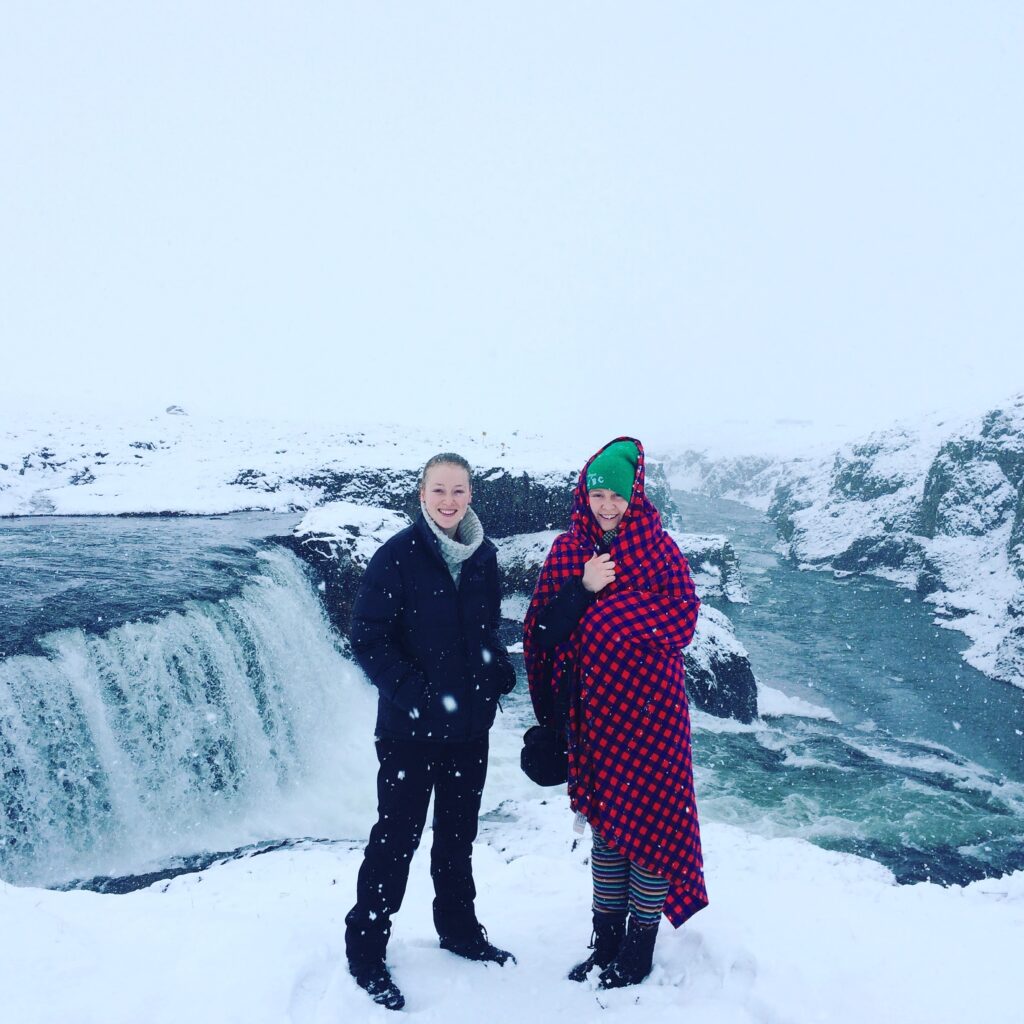Embracing unpredictability, sparse amenities, and a resilient spirit, campervanning in Iceland in the depths of winter defies conventional holiday norms. With Iceland now proving to be the muse for cinematic photography, swarms of tourists venture to the land of fire and ice, drawn to its natural beauty – most choosing the more favourable warmer days and extended daylight hours. Iceland in summer is sensational. But Iceland in winter – now that is extraordinary.
Iceland’s tourism surge can be traced back to the 2008 financial crash. This saw the króna drop significantly, making the country a more affordable travel destination. Then, the eruption of Eyjafjallajökull in 2010 effectively acted as an international marketing campaign, placing Iceland on the map—figuratively speaking. Eyjafjallajökull was unpronounceable by any international reporter at the time. However, we had a tip from a local at the van hire venue: “If you say ‘Aye-I-forgot-la-yogurt really fast, consider yourself an expert in Icelandic pronunciation.” So, with this, we traded accessible roads, drier weather and plush bedding, for thermal underwear, canned soup, full car insurance and no showers. “Call us if you get stuck in the snow,” the van hire man said as we thanked him with a cheerful “Takk” and set off on our adventure.
Nowadays, the króna has recovered, and travelling on a budget in Iceland requires a bit of creativity. “Van life” has risen in popularity across the travel sphere, making travel more affordable for those willing to push the limits of comfort. With limited heating and only a few hours of daylight, layers, hearty soups, and down sleeping bags become your best friends when taking on ‘van life’ in the colder months.
Winter allows Iceland’s previously untouched and fragile ecosystem to break from over-tourism, reducing pressure on crowded visitor attractions. Aligning with Iceland’s strong values of minimalism and resourcefulness, campervanning allows you to embrace nature more simply. The cold deepens the crash course in mythology, enhancing mystical and magical landscapes through dark shadows, overcast skies and snowfall.
Start your adventure in Reykjavík, following the popular Golden Circle—a 300km loop showcasing Iceland’s highlights. The first stop, Þingvellir National Park, is a UNESCO World Heritage Site where the North American and Eurasian tectonic plates visibly pull apart. “North America, Europe, North America, Europe”, my friend gleefully shouted, finding amusement in having two feet simultaneously on two continents.
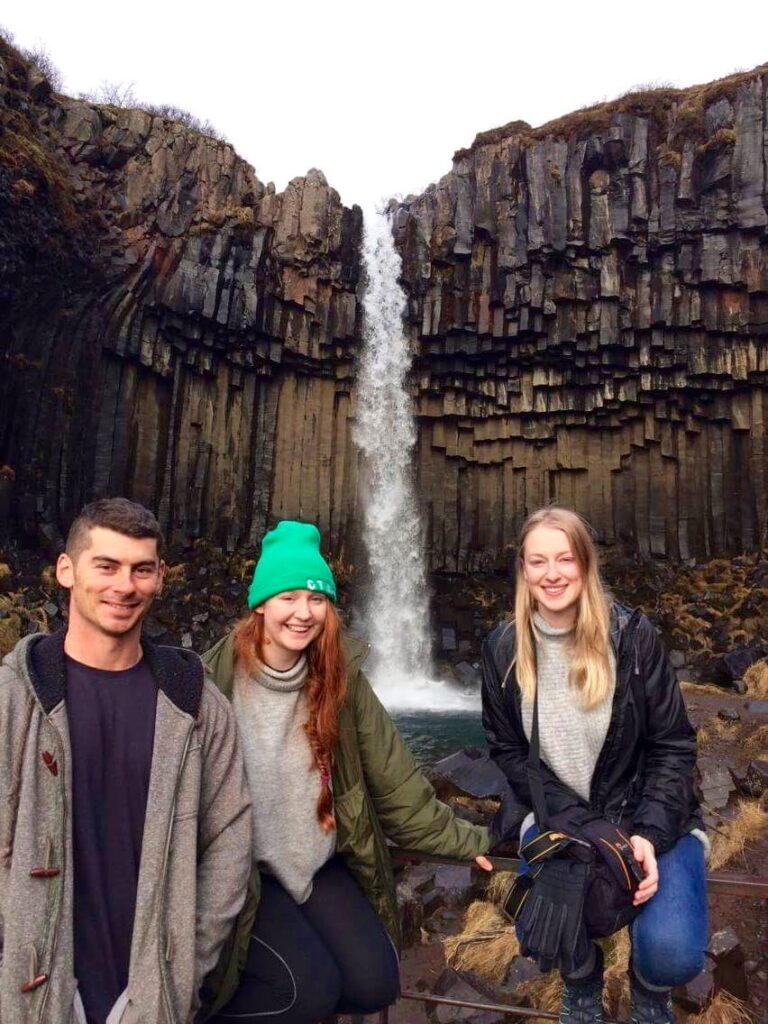
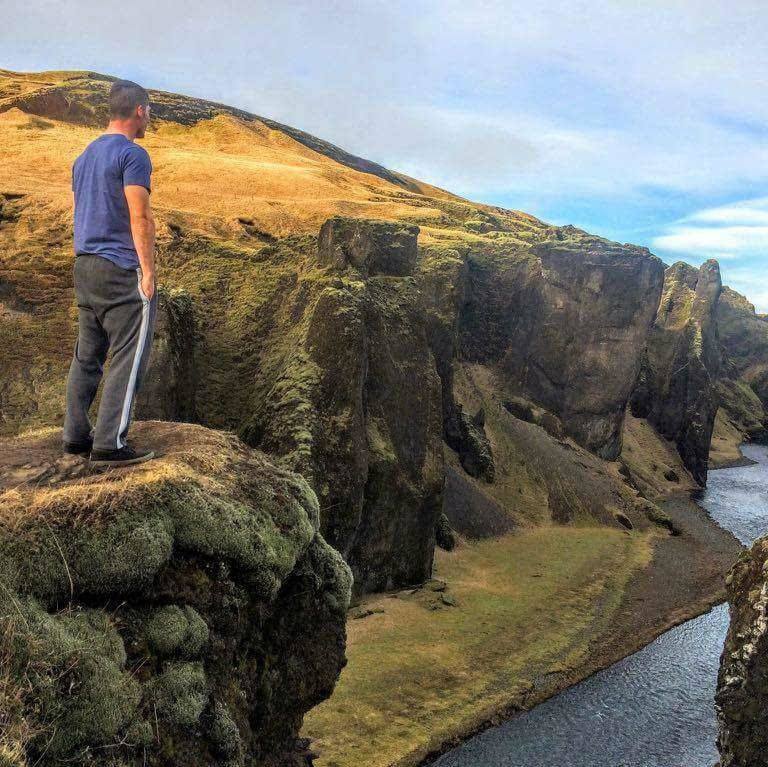
Strokkur geysers put on a dramatic show, erupting with boiling water as it shoots up to 30 metres in the air. With each eruption, you’ll find yourself holding your breath, in awe of nature’s raw power – and from the smell of rotten eggs. This natural phenomenon is in the Haukadalur Geothermal Valley, surrounded by steam vents and bubbly mud pots. Long before Instagram dictated our travel itinerary, Haukadalur has been drawing travellers since the 18th century. “Well, it’s certainly not the smell that draws people here”, my mate muttered, pulling his beanie lower as the sulphur-ridden smell tickled his nostrils. After your olfactory senses have filled with Sulfur, Gullfoss Waterfall provides a more peaceful and subdued experience, perfectly completing your Golden Circle journey.
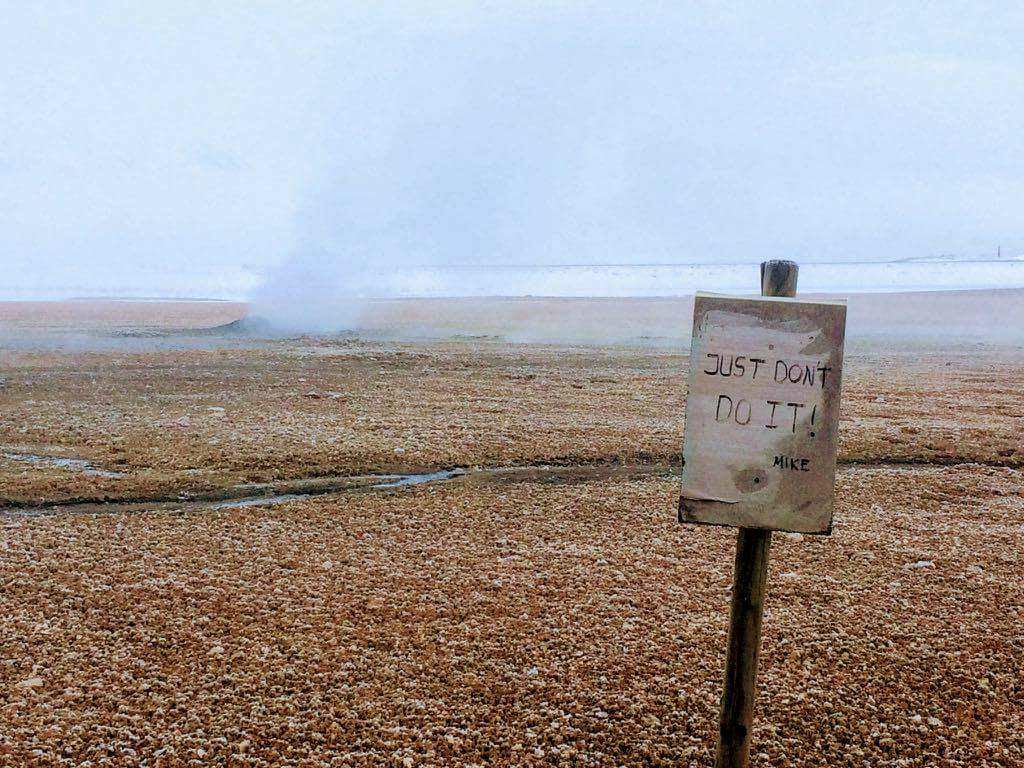
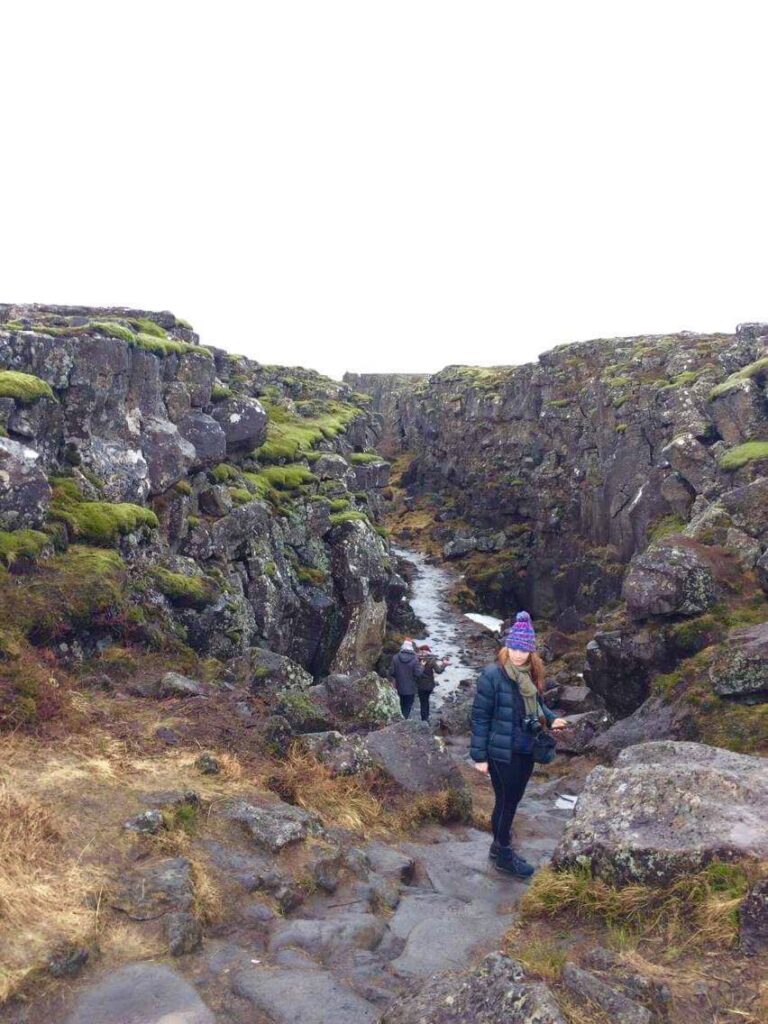
As the sun sets early on that remarkable first day, you can further your adventurous appetite by hiking to Reykjadalur Hot Springs. Picture a moderate climb through a valley of snow-capped mountains — the moonlight and the soft glow of your headlamp guiding your way. Steam vents line the track in places, casting an ethereal veil that creates a magical, fairytale-like experience.
Ed Sheeran’s I See Fire plays quietly on your portable speaker, adding a cinematic touch and making you feel like a character from The Hobbit. You wind along the mountain trail, your senses heightened, and you arrive at the hot springs. Though it feels like a cheeky midnight dip, it’s only 6 pm — and no one else is around. The solitude is remarkable. Mist closes in, and light rain begins to fall as you immerse yourself in the mineral-rich waters, thinking, “Does it get any better than this?”. That night, we slurped our canned minestrone as it warmed our innards before we crashed peacefully, asleep by 7 pm in the comforts of our campervan.
Iceland is home to over 100 waterfalls, and Seljalandsfoss, Gljúfrabúi, and Skógafoss are three powerful representations of the wild North Atlantic weather. Rooted in mythology and folklore, these natural wonders are believed to be home to fairies, elves, Norse gods, and hidden treasure. We discreetly joined a local tour group, blending in with the sea of Kathmandu puffers, listening to the guide say, “According to legend, a chest of gold lies hidden in a cave behind Skógafoss, where Iceland’s first Viking settler and sorcerer, Þrasi Þórólfsson, is said to have dragged his boat ashore after landing in the 900s”.
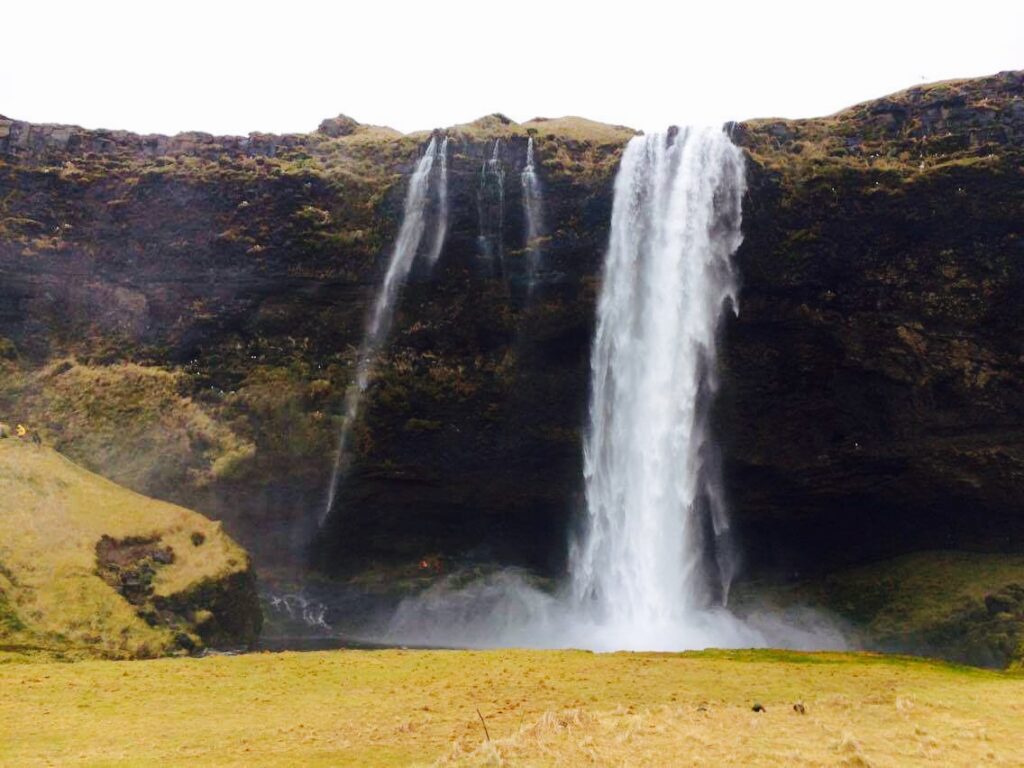
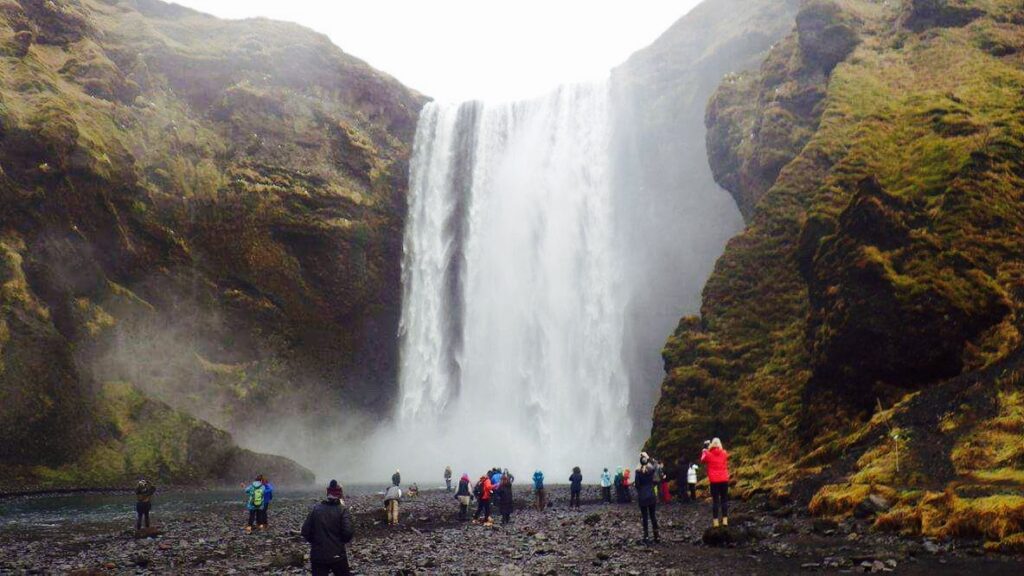
Myth, folklore and legends are not limited to waterfalls alone. According to local tales, two trolls attempted to drag a ship to land but were turned to stone as daylight broke. The large rock formations on Reynisfjara’s black-sand beach are believed to be these trolls. For a deeper dive into the tale, check out Jewells Chambers’ podcast on the beach’s folklore. Iceland’s jet-black shores symbolise the true wildness of nature. Winter intensifies the contrast between the harsh and unrelenting beauty of black-sand beaches against the softer, more serene landscapes of the mountains. It stretches endlessly along the jagged coastline – a stark reminder of how far you are from Bondi.
Travel is about pushing boundaries and exploring beyond the typical Lonely Planet or Instagram checklist. It’s about venturing to places that aren’t always roadside and require creative navigation. A detour from Route 1, Seljavallalaug is a treasured gem hidden in the valley beneath the infamous Eyjafjallajökull volcano. A blend of artificial and natural architecture, swimming beneath a volcano on a cold winter’s night is an otherworldly experience. With snow-capped peaks and a star-filled sky, the land of fire and ice truly captured our hearts. As we slept in our campervan that night, we hoped Eyjafjallajökull would sleep as soundly as we did.

As a light rain fell the next morning, the aroma of instant coffee filled our van. There is something simply sublime about sipping gas burner brewed coffee and peering out at a whitewashed world. These slow campervan mornings are quietly magical – forcing you to do nothing but enjoy the warmth of the coffee mug in your hand and the soft hum of the heater. Several hours later, as the clouds began to lift, the sun’s rays reflected brilliantly off several hundred icebergs that floated in the calm waters — “a ghostly procession of luminous blue icebergs”, as described by Andrew Stone, author of Scandinavian Europe (2009). This is Jökulsárlón. The grandeur of this ecological phenomenon is impossible to summarise in a guidebook. You can’t begrudge the tourists for flocking in droves to witness such a sight.
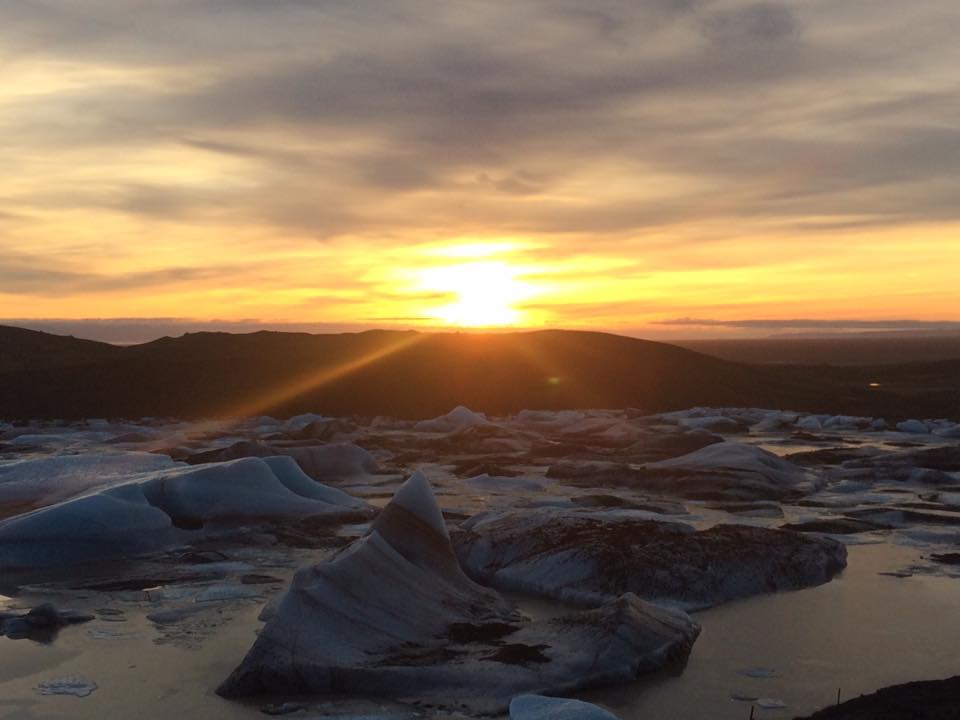
I will leave you with one last image of the perfect night. Picture crisp snowflakes falling lightly as you soak in a natural hot spring, just large enough to fit three close friends. No one else in sight. Beside you, a cascading waterfall enhances the moment’s intimacy — barely visible under the moonlit sky but unmistakable in its sound. The temperature is perfect, warming your body as you lower your shoulders beneath the surface, leaving only your face exposed to the elements. Above, the Northern Lights dance in ribbons of green, purple, and pink. Here, nature reveals its true beauty — unfiltered and serene. I turn to my friend, who puts it as plainly as Darryl Kerrigan from beloved Australian film, The Castle, “How’s the serenity?”.
